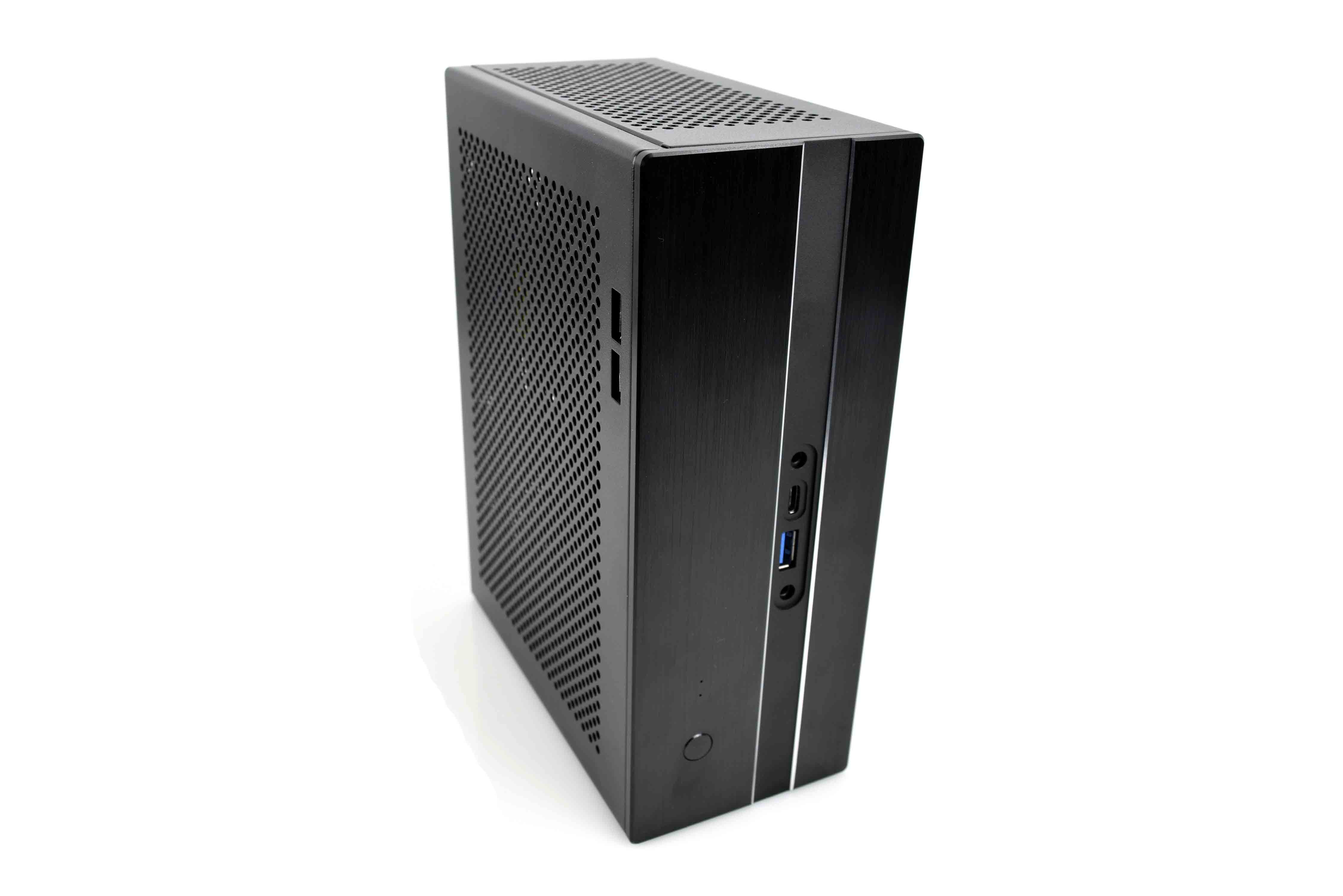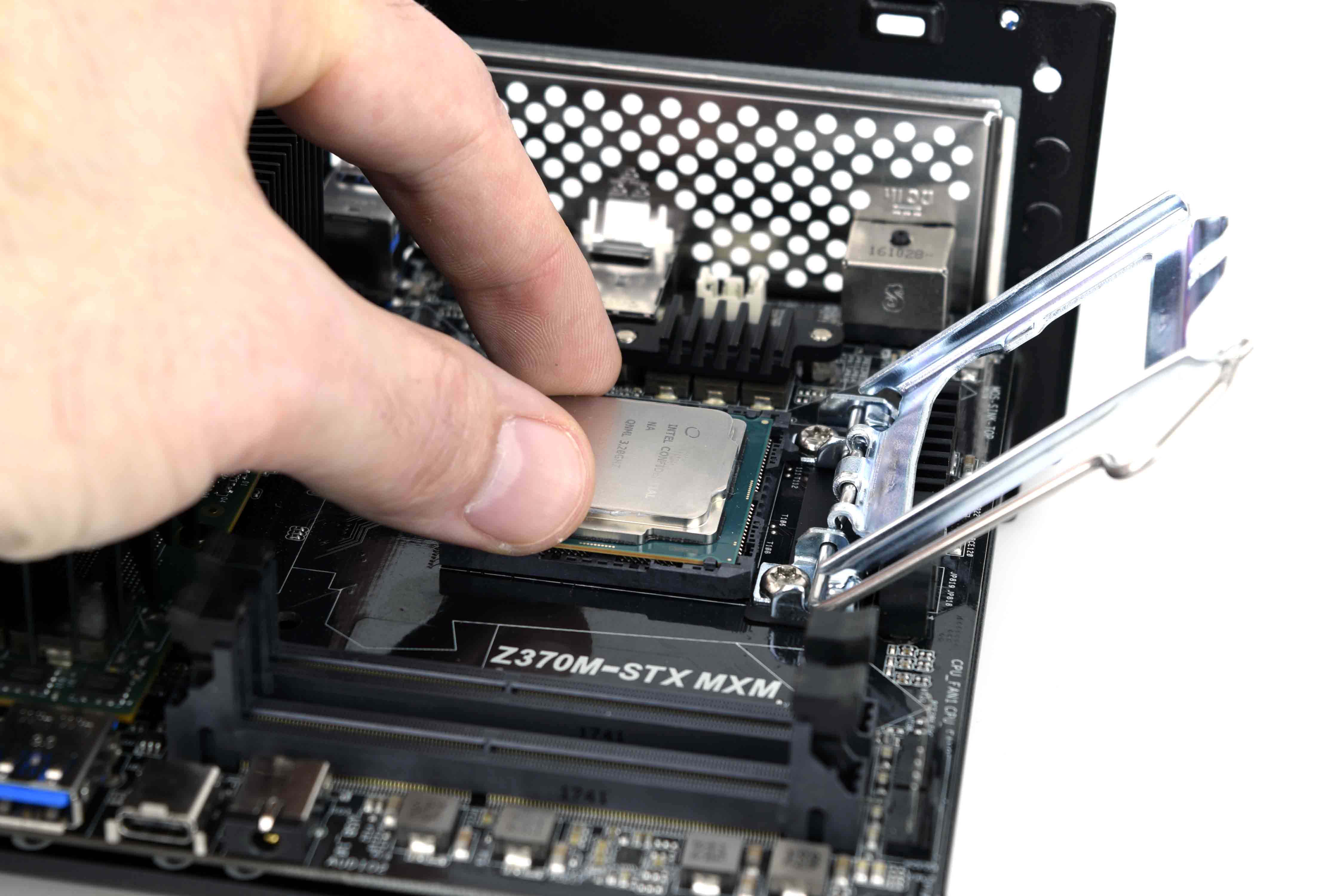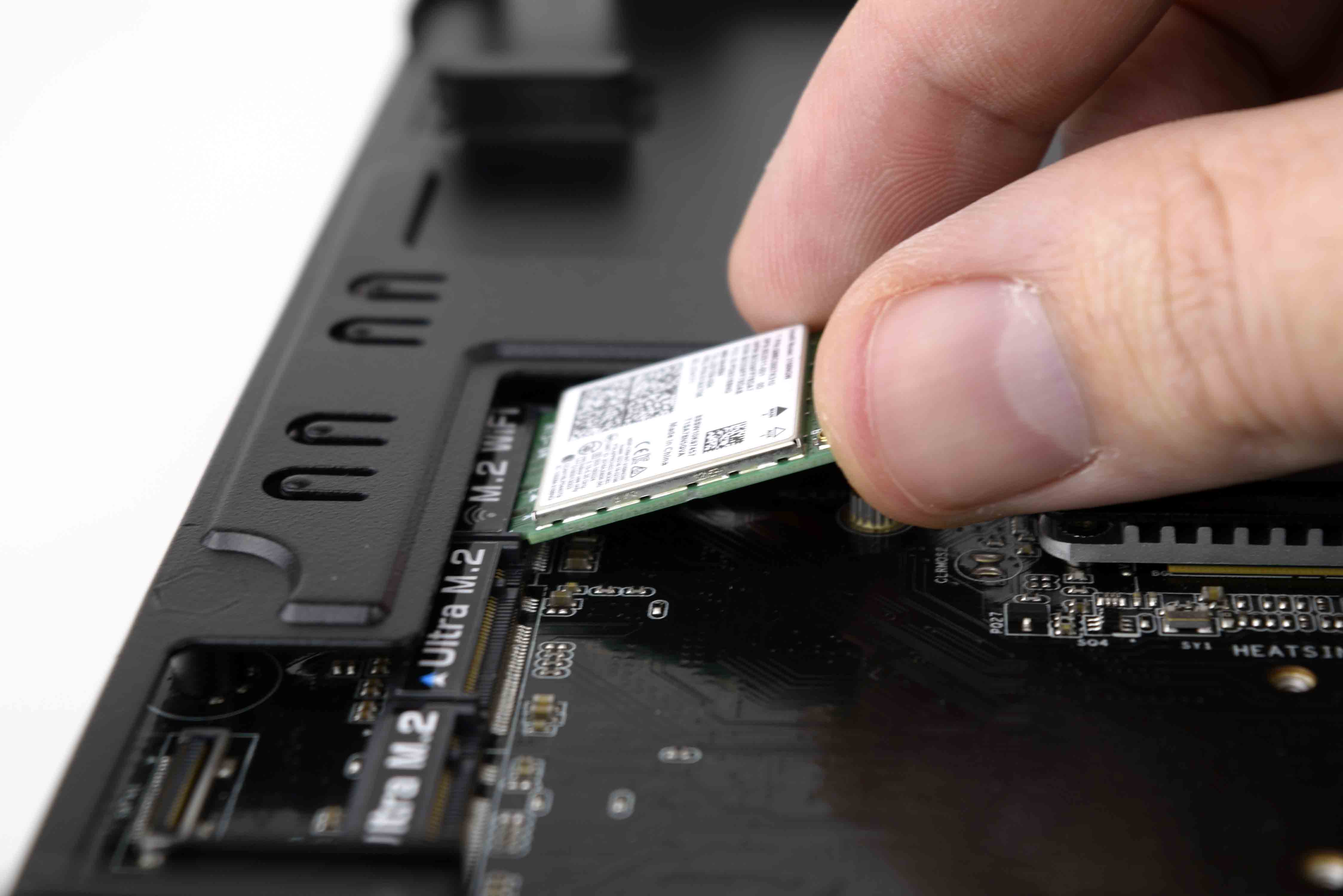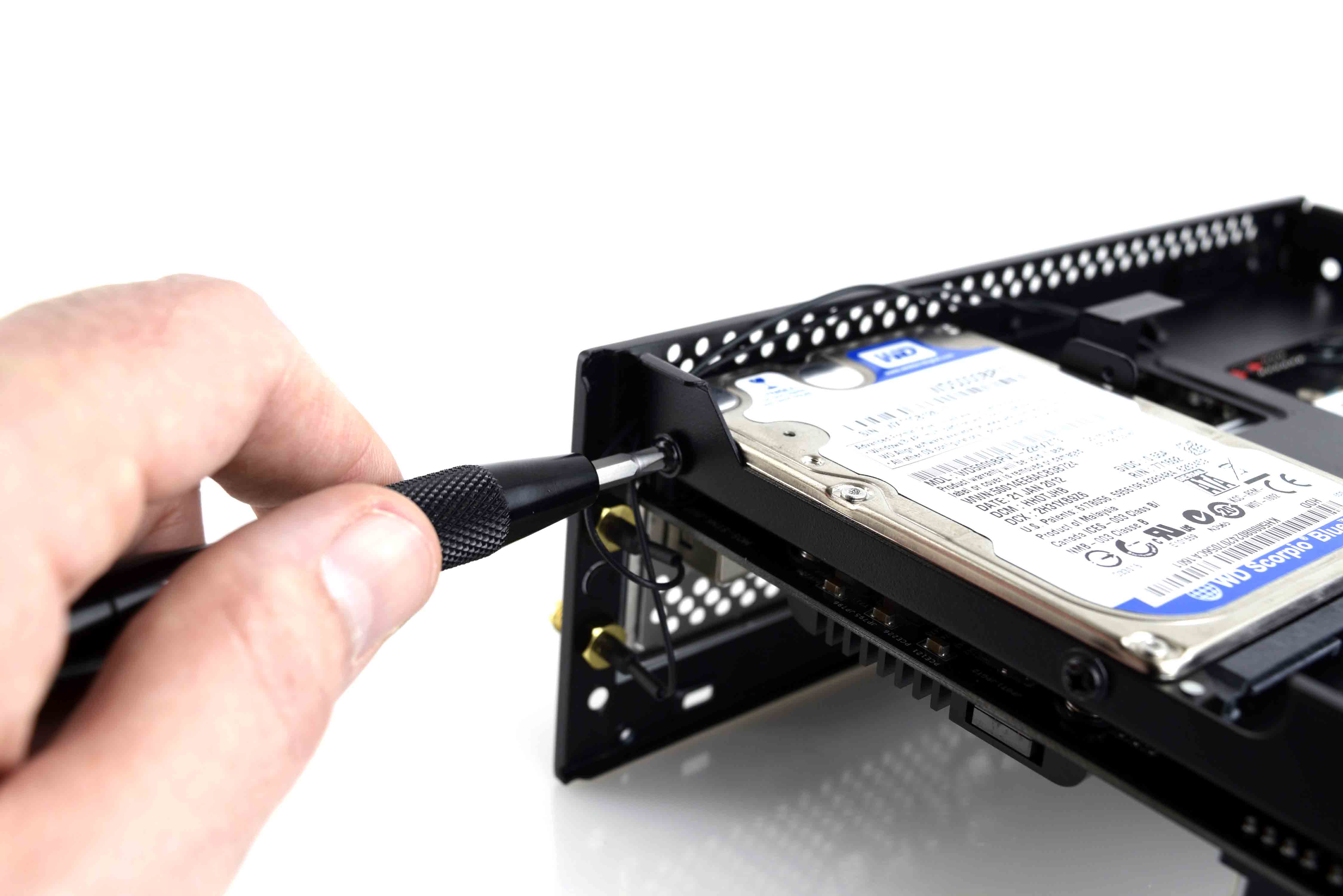Early Verdict
The ASRock Deskmini GTX Z370 is the ultimate barebones mini PC for enthusiasts that enjoy building their own PCs.
Pros
- +
Incredibly small
- +
Ample storage capabilities
- +
DIY friendly
Cons
- -
High price
- -
Limited USB connectivity
Why you can trust Tom's Hardware
Introduction & Product Tour
ASRock updated its Deskmini barebones mini PCs to a Z370 platform, and it’s one of the most capable and versatile systems of its kind. The Deskmini is the ultimate enthusiast mini PC with support for 8th generation (Coffee Lake) Intel desktop processors, options for GTX 1060 (in Taiwan) or GTX 1080 (in the United States) graphics, and more total storage drive capacity than any other mini PC we’ve ever seen. The GTX 1080 version sold in the U.S. will run for $1,529.99, while the GTX 1060 model we tested is around $900 USD (if you go by Taiwanese pricing). The new Z370 Deskmini is worth every penny if you need a seriously small form factor and like to build your own PC.
Specifications
| Product/Price | ASRock Deskmini Z370 GTX ($900 - Estimated USD) |
| Processor | Support for Intel 8th Generation (Coffee Lake) LGA 1151 Celeron, Pentium, and Core Processors |
| Motherboard | ASRock Z370M-STX (Micro STX) |
| Memory | Up to 32GB (2 x 16GB) DDR4-2666 SODIMM |
| Graphics | Nvidia GeForce GTX 1060 6GB GDDR5 (MXM); Nvidia GeForce GTX 1080 8GB GDDR5X (MXM) |
| Storage Options | (2) M.2 2280 PCIe 3.0 x4/SATA 6GB/s, (1) M.2 2280 PCIe 3.0/Optane, (2) 2.5” SATA 6GB/s Drive Bays |
| Optical Drive | None |
| Networking | Intel I219V Gigabit Ethernet; Intel Wireless-AC 3168 802.11ac WiFi + Bluetooth 4.2 (Included) |
| Interface | Rear: (4) USB 3.1 Gen 1 Type-AFront: (1) USB 3.1 Gen 1 Type-C; (1) USB 3.1 Gen 1 Type-A; (2) USB 2.0 |
| Video Output | GPU: (1) DisplayPort 1.4, (1) HDMI 2.0, (1) Mini-DisplayPort 1.4 Motherboard: (1) HDMI 2.0 |
| Power Supply | 220W AC Adapter (GTX 1060); 270W AC Adapter (GTX 1080) |
| Case | Deskmini GTX/RX |
| Cooling | Stock Intel Cooling Solution (Heatsink/Fan) |
| Operating System | Windows 10 64-Bit |
| Dimensions | 213 x 154.5 x 81.9mm |
| Other | Barebones PC (No CPU, Memory, Storage, OS) |
Exterior
The ASRock Deskmini Z370 GTX isn’t designed to attract the eye - it could easily hide behind your attached display with its petite 213 x 154.5 x 81.9mm chassis. You certainly wouldn’t expect something this small to house a motherboard capable of supporting desktop processors and GTX 1060 or 1080 graphics, and the black steel and aluminum construction gives the tiny wonder a sturdy base and a clean, sleek look.
You could place the Deskmini horizontally, but the left, right, and top panels are all ventilated, and I preferred to leave them exposed by setting the PC upright. This gives the components inside considerable airflow and in theory, better cooling capability (which is critical at this small size). However, you have to start assembling the barebones PC before you even open the case - the rubber feet at the bottom panel that stabilize the upright chassis need to be peeled and attached (you’ll see the grooves where they go in each corner) before you place it anywhere.






The front panel features a black brushed aluminum finish with two off-center silver inlays that span from the top to the bottom of the device. The ports on the front panel are centered in between the two stripes and consist of a USB 3.1 Gen 1 Type-C port and a Type-A port, as well as two audio jacks (one mic-in, one headphone-out/mic-in combo). The left side panel’s edge also has two USB 2.0 ports that use a header on the motherboard.




The back panel doesn’t offer much more USB connectivity, with only four USB 3.1 Gen 1 Type-A ports. But the Deskmini can connect multiple displays via and HDMI 2.0, DisplayPort 1.4 and a mini-DisplayPort from the GPU or an HDMI 2.0 port on the motherboard.
Interior
As a barebones device, the ASRock Deskmini comes without a CPU, memory, storage or an operating system, so you’ll have to buy and install your own. To get to the components, you’ll have to remove the four Phillips-head screws at the back edge on the top and right side (two on each side) and slide the ventilated aluminum panel away from the front. The Deskmini’s Z370M-STX micro STX motherboard comes with a GPU (GTX 1060 or GTX 1080) pre-installed with a custom air cooler attached to the MXM card (this is much more commonly found in laptops). However, the board is also available by itself sans graphics.




You can access the Z370 motherboard’s LGA 1151 CPU socket and two DDR4 memory SODIMM slots without any further disassembly, but you’ll have to remove two screws (one on each side of the motherboard), unplug the front panel I/O cables and slide the board away from the front panel to get to the storage and Wi-Fi interfaces on the other side.
Get Tom's Hardware's best news and in-depth reviews, straight to your inbox.




The opposite side of the device hides an impressive amount of storage interfaces. There’s a total of four M.2 slots - one for a Key-E WiFi module (which is included but not preinstalled) and three for 2280-sized storage devices. Two of the three M.2 slots support PCIe 3.0 and SATA 6GB/s drives, and the bottom (three-lane) interface can be equipped with a PCIe 3.0 x4 SSD or an Intel Optane memory module if you want to use the Z370 chipset to cache a secondary 2.5-inch HDD (why make a boot volume from an Optane-cached HDD with all that M.2 space?). Speaking of which, you can fit two 2.5-inch drives above the M.2 storage.
Software And Accessories
The ASRock Deskmini is shipped with a driver disk that also features RGB LED control software for the motherboard’s 4-pin RGB header, which helps if you want to install a flashy LED strip (not included) to illuminate the interior components. Since you have to install the operating system yourself, bloatware is not a factor.











ASRock provides a plethora of hardware to install your M.2 and 2.5-inch storage devices and Wi-Fi module (included). This includes two SATA power and data cables and the Wi-Fi antenna cables, both of which you need to install and run yourself. The antenna mounts can be installed by punching out two of the perforated holes at the back panel of the chassis, and the two 2.5-inch drives are attached with a combination of notches and screws.
MORE: Best PC Builds
MORE: How To Build A PC
MORE: All PC Builds Content
Derek Forrest was a contributing freelance writer for Tom's Hardware. He covered hardware news and reviews, focusing on gaming desktops and laptops.
-
almarcy I am a geezer ATX fan. I am also a low $ user, so, I have not yet installed my new SSD. It is fine that folks want tidy small computers. They sell several/minute. Life goes on, within me and without me. My build is ca, 2012. Happy Tuesday :)Reply -
newsonline.4000000 Cons:Reply
1- Very cheap build quality.
2- Looks ugly and not modern.
3- Expensive MXM Card . itx Cards upto 1080 are available today , there is no need for MXM cards.
4- Not easy to upgrade GPU.
5- No Thunderbolt which is important for small form factors. -
nostriluu It's very puzzling why no tiny pc maker won't simply make room for a 3.5" drive. Sure, it'll add an inch or so, but the storage options are much better. Whoever designs a mb & case to fit two nvme drives and a 3.5" drive deserves wealth.Reply -
nostriluu It's very puzzling why no tiny pc maker won't simply make room for a 3.5" drive. Sure, it'll add an inch or so, but the storage options are much better. Whoever designs a mb & case to fit two nvme drives and a 3.5" drive deserves wealth.Reply -
jcwbnimble The worst part seems to be that fact that for this kind of money, you still have to purchase and install memory, CPU and storage. $900 for a motherboard and GPU seem like a very high premium, even if they are smaller than anything you can buy at Newegg or Fry's.Reply -
kewlguy239 In response to newsonline- I can attest to the build quality of the device... it features a steel and aluminum construction and is quite solid. We can debate the looks of it, because that's subjective (I found it sleek and elegant, some prefer edgy and flashy). MXM cards are indeed expensive, but the interface in the Deskmini is quite accessible and not all that hard to replace (say, if/when MXM 1180s arrive).Reply
The size of the Deskmini wouldn't permit for a short-board (mini-ITX) graphics card as you suggested... I suppose you really have to see it next to something to get the scale of how small it really is, but it's only slightly larger than one of those types of GPUs. Thunderbolt... yes. The lack of it is somewhat disappointing, but the next-gen interface only has so many applications, many of which don't apply to mainstream users. However, I understand your disappointment with the MXM GPU form factor and interface... the Deskmini may not tick all the boxes for users looking for those things in one small package. But I believe it ticks a lot of the boxes for someone considering a product of this kind, especially if you look at other devices in this category and enjoy the DIY approach but still want to go the barebones mini PC route.